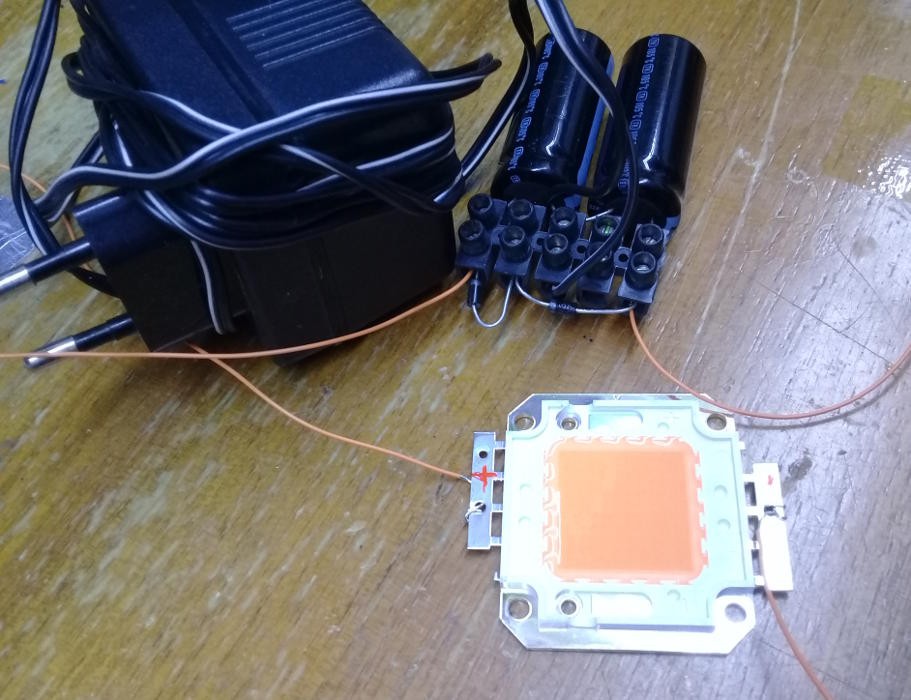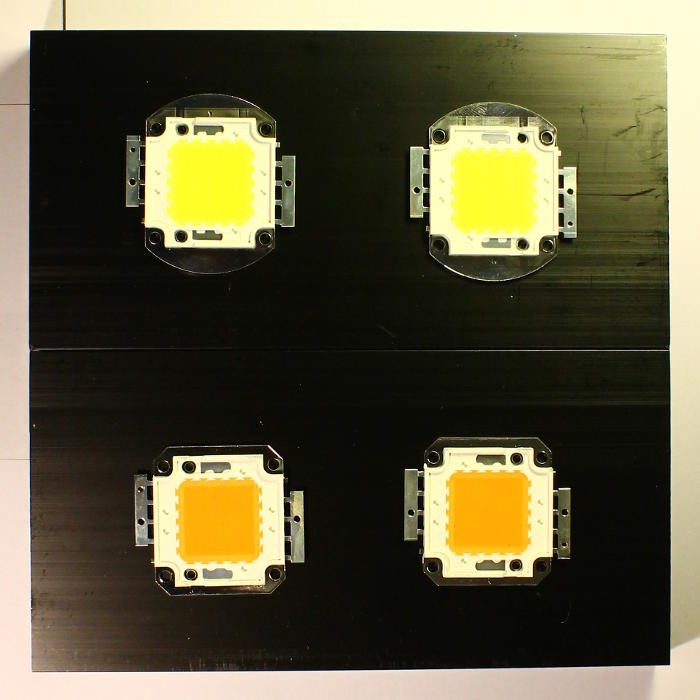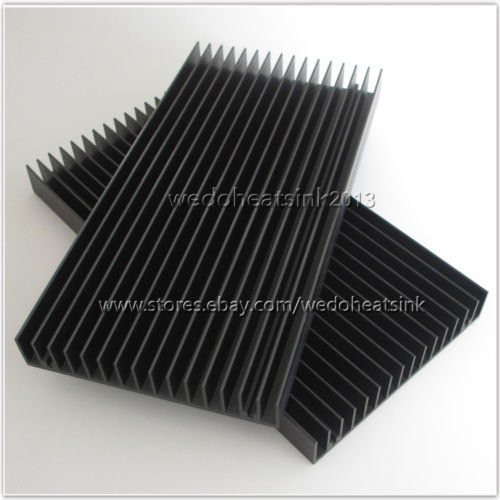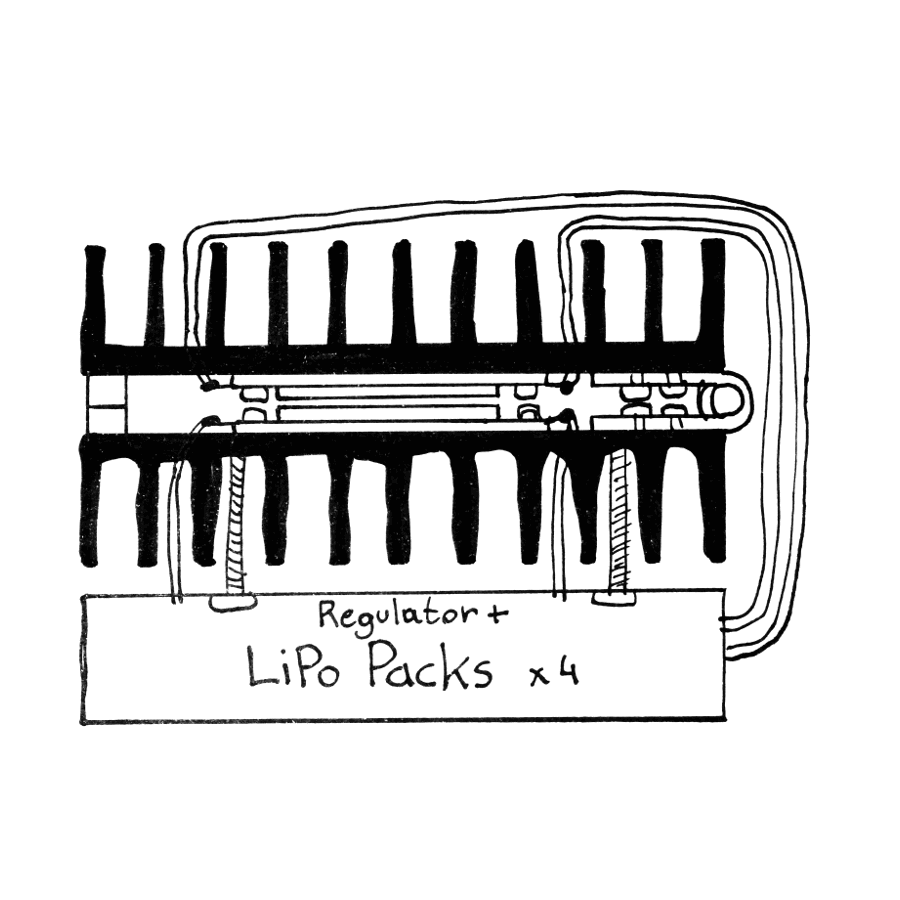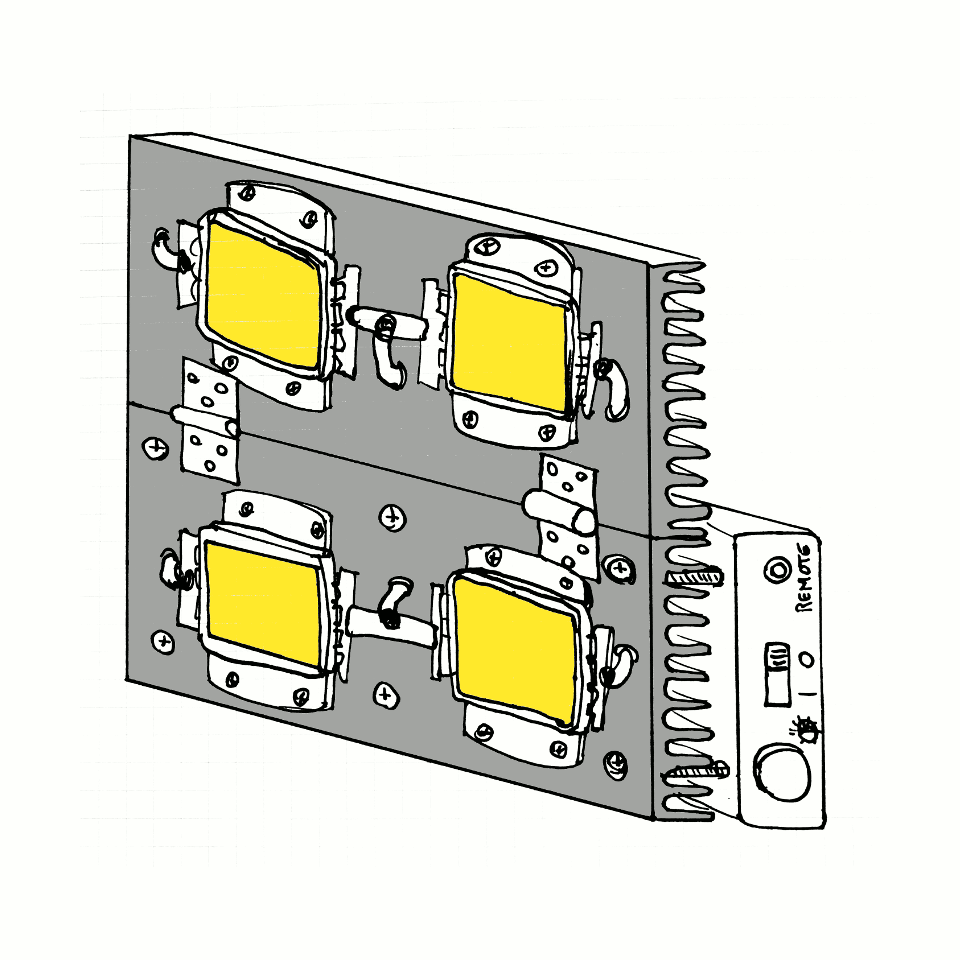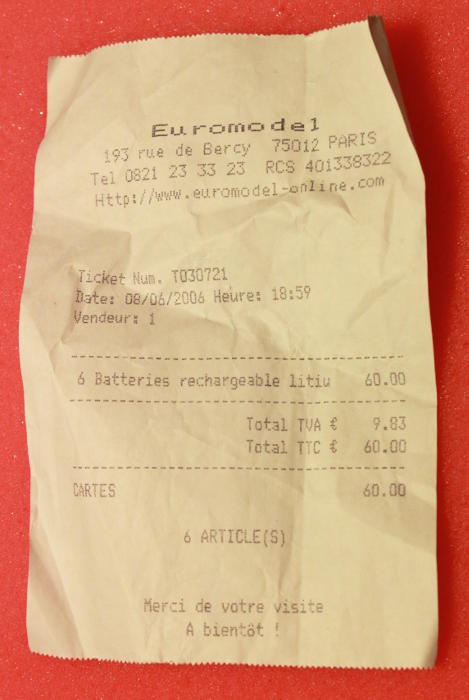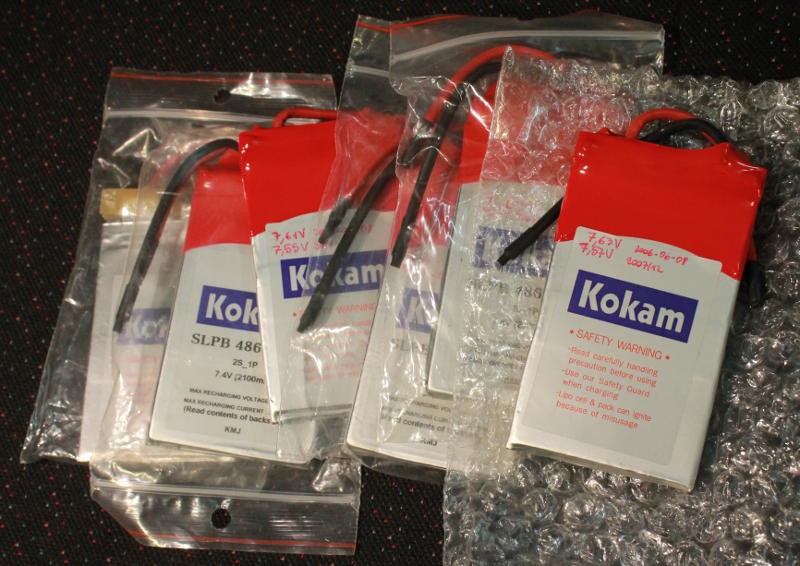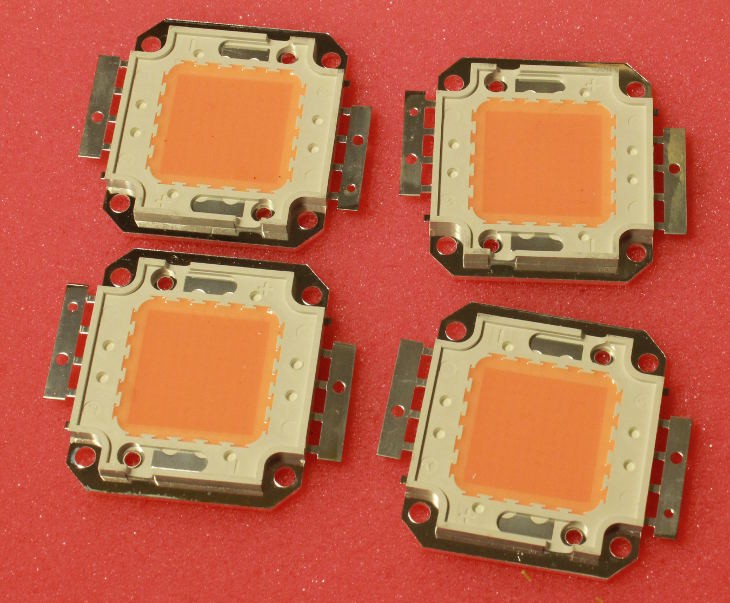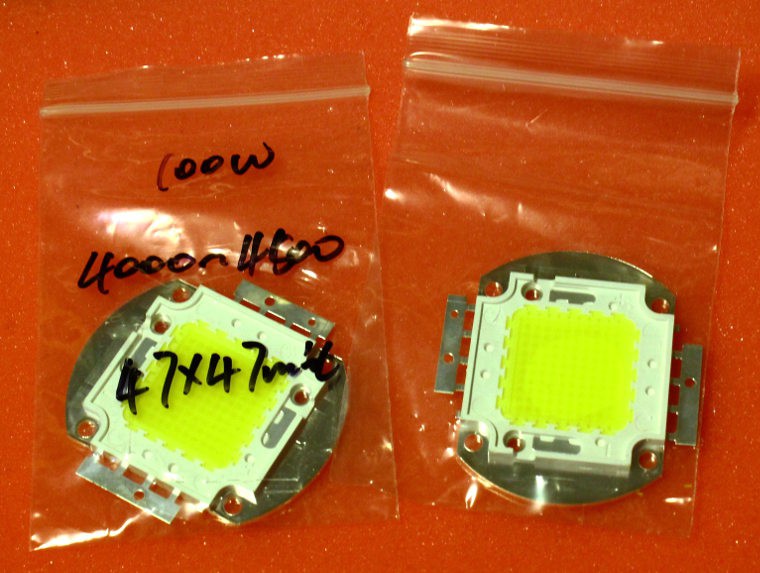-
Unexpected (happy) semi-ending
08/14/2019 at 23:33 • 0 commentsDo you remember the log Another ordering mistake ? Well...
I have a new indoor leafed companion and he feels very sad in the dark. He's used to a different climate with intense direct sunlight so he has a lot of troubles with growing :-(
So I took the "full spectrum" LED modules from the archives and made a crude power supply. The modules require about 28V but I didn't want to go full power so a dual single-wave rectifier transforms 12Vac (from a small wall transformer) into 26.6V (average). It's... very bright, though not overwhelming, which should be more than enough for my companion.

2 diodes, 2 bulk capacitors, some wires and connectors... that's it. For now.
The story is not over because I still need to solve a lot of practical issues, such as finding a long enough wire, or mount the LED module in the right height and position to target the leaves. Oh and some alu paper around the whole will reduce the waste of light, as well as keep me from waking up with the light :-D
And if you really want to know, it's a baobab coming straight from Africa... He has already lost his leaves several times (due to accidents) but keeps regrowing (slowly) so I want to give him a chance :-D
-
More progress
04/21/2017 at 23:00 • 0 commentsToday has been a pretty big day !
This project is being featured on HaD:
Hackaday Prize Entry: Portable LED Flash For Photography
Thanks again people !
And I just received the heatsinks. I can finally have a better idea of the mechanical system. I only have 2 LED modules so I can try to complete with the pink duds...
The 2 lower modules are the pink duds, with a shape different from the above 4500K modules. So I'm still stuck at this point...
The mechanical work will be quite delicate but I can count on my neighbours :-)
Now, I have to find suitable hinges...
-
Structure
04/05/2017 at 03:00 • 0 commentsI have estimated that a reasonable compromise for the weight and dissipation would be 10cm×10cm area behind each 100W LED. So for 4 modules I was searching a dissipator that measures about 20×20cm.
Instead, I have found this :
2 pieces of 20×10cm. Damn, it's not large enough but the surface is ok. What can I do ?
The problem is actually a solution for something else : size !
If I'm doing photography outside, I need to carry the thing and it takes some room. So each dissipator can hold 2 100W LED modules and then... it folds !
Yes, the new idea is to attach them with hinges to make a more compact assembly, which also shields the fragile LED surfaces. The dimensions are also suitable for the batteries that can be attached behind one heatsink, with the electronics.
There will be "a bit of mechanic work" but nothing too crazy, I just need a few hinges that leave some space for the LEDs once the sandwich is closed. The modules are less than 5mm thick (I haven't considered the screws) so I need a hinge with a large diameter (about 10mm). On the other side of the flap, a piece must keep the heatsinks from touching the LEDs.
Overall, here is the unfolded system :
I still have to figure out how to keep it open when I need it... and attach it somewhere so I don't have to hold it with my arm :-D
-
Energy source
04/04/2017 at 18:12 • 0 commentsThis kind of project wouldn't be viable without a suitable source of electricity. I happen to have studied Lithium batteries, a decade ago :-)
This project is a perfect fit for the stock of old batteries I had bought from a RC store, a while ago... 60€ for 6 2S1P KOKAM packs, that's a bargain :-)
As far as I know, the low price (10€ vs 87€) is because at that time, the RC world was transitioning from 10C to 20C cells, and these are "old 10C" that wouldn't be great for flying engines. But still excellent for our purpose, with low current and short strong spikes.
This battery is not heavy and the energy capacity is great : 7.4V×2.1Ah = 15.5Wh ! Give or take 20% due to aging (but not use because they are brand new).
The peak current is also in the desired range : 10×2A=20A !
I have 6 such packs, so I can make 6×8=48V easily. This is perfect because the LED modules require between 24 and 32V (there are 10×10 LED chips in the module). 4 packs in series will make up to 34V when fully charged (that's 8S1P...) but I have not taken the various voltage drops into consideration...
But first, let's see if they are still alive ! The last measurements for one 2S1P pack is:
- 20060608: 7.63V
- 200712 : 7.57
- Today 20170404 : 7.21V
Looking good !!!
So one 8S1P pack can drive short pulses of high current in the projected 4×100W modules, while also maintaining some decent light output. The pack could sustain short pulses of 20A, or about 5A/module if the 4 are wired in parallel.
The 100w modules are made of 10×10 LEDs, 100W/100=1W/LED so we estimate that each LED is designed for 300mA. 0.3A×10=3A for 100W. 4 modules in parallel will draw 4×3=12A@400W (that's a lot).
The voltages so far :
- 7.21
- 7.34
- 7.13
- 7.21
- 7.14
- Can't measure, bad contact ?
The remaining 5 packs clearly need to be re-balanced. Fortunately, none seems to have swollen and they are all from the same batch so can be used in series. I'll parallel them (through resistors) and keep the 7.34 (healthier) for an eventual project.
-
Another ordering mistake
04/04/2017 at 17:57 • 8 commentsThe project started a few weeks ago, with a little misunderstanding.
The idea came from my unpractical 10"×10" 60W panels and I was looking at the new cheap 100W COB modules. My panels are nice because they mix both warm white and cold white, which makes them suitable for not-too-bad photography, but the 100W COB are single-temperature...
I mostly find cold white (8000K) or warm white (3000K), both of them are unsuitable : I need something inbetween. And on eBay I find 100w modules with "full spectrum" light : Great !
Of course, you suppose what is going to happen : I ordered 4 modules, got them after waiting, then tried them.
The result is totally unsuitable for photography because it creates a weird pink/fuchsia tone !
Then I understand why they are used and made in bulk : for growing plants. I don't. Anybody needs 400W of chlorophile-friendly light emitters ? I'm open to trades :-D (electronics-related)
The happy ending (of this episode) is that I have already found 4500K modules. I'm waiting for the delivery of 2 others...
Portable LED Flash
As modern photography is revolutionized by LEDs, I'm applying my experience in this field to enhance my hobby
 Yann Guidon / YGDES
Yann Guidon / YGDES